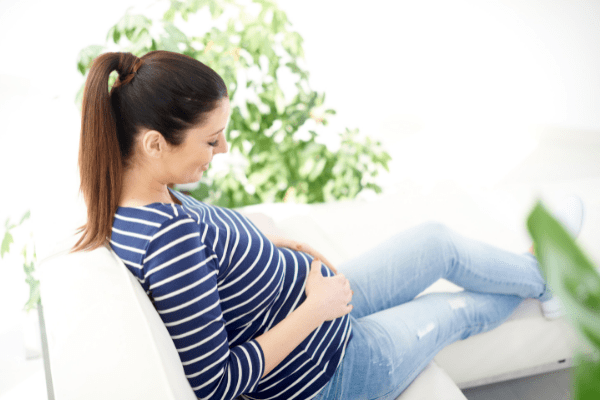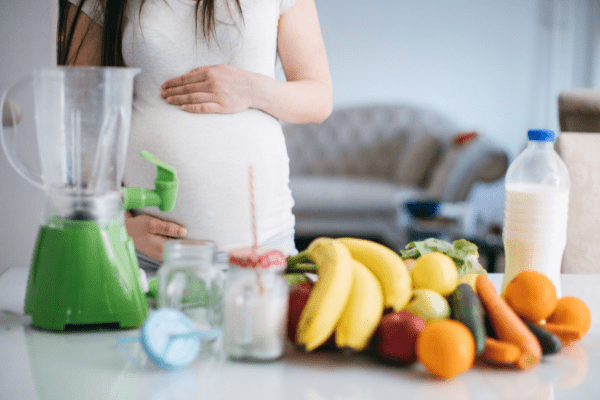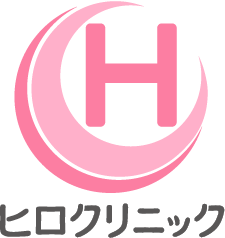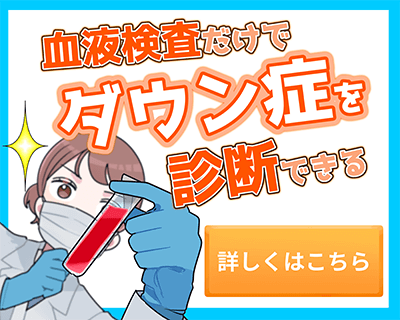What are the risks of giving birth at an older age?
Pregnancy and childbirth come with many risks and problems, regardless of age. In addition, the probability of risk and trouble increases for women aged 35 and over, compared to women under 35 who give birth for the first time, who are generally considered to be in the optimum age for pregnancy.
Risk 1: Increased chance of miscarriage
The miscarriage rate by maternal age is shown in the table below.
Reference: Health Science and Healthcare – Does giving birth at an older age increase congenital anomalies? Analysis of assisted reproductive technology congenital anomaly data
age Miscarriage rate 20s to 35 years old 20% 36 to 39 years old 30%~35% 40 years old 40% 43 years old 50% 44 years old 60% 45 to 48 years old 70% Age 49 or older 90%
The miscarriage rate is generally considered low at about 20% for women under 35, which is generally considered the optimum age for pregnancy. However, the probability of miscarriage increases slightly from 35 years old and above, which is considered to be an advanced pregnancy, and the probability of miscarriage increases further to about 40% for women over 40 years old.
One of the reasons why the probability of miscarriage increases with age is the deterioration of eggs and sperm. As we age, the number of eggs decreases, and the concentration and motility of sperm also decrease. This deterioration of eggs and sperm is also said to be the cause of chromosomal abnormalities, and miscarriage in this case cannot be prevented with modern medicine.
Risk 2: Higher incidence of chromosomal abnormalities (Down syndrome)
The incidence of Down syndrome and other chromosomal abnormalities by maternal age is shown in the table below.
Reference material: Ministry of Health, Labor and Welfare – Report of the “Study Group on the Status of Specific Treatment Support Programs for People Suffering from Infertility” Reference material
age Probability of Down Syndrome (Trisomy 21) Probability of other chromosomal abnormalities 25 years old 1/1250 people 1/476 people Age 30 1/952 people 1/384 people Age 35 1/385 people 1/192 people 40 years old 1/106 people 1/66 people 45 years old 1/30 people 1/21 people 49 years old 1/11 people 1/8 people
Pregnancy at an advanced age (over 35 years old) increases the risk of the fetus having chromosomal abnormalities due to the deterioration of eggs and sperm. Chromosomal abnormalities are said to increase the chances of miscarriage and the incidence of Down syndrome (trisomy 21) , the most common type of chromosomal abnormality.
Down syndrome (Trisomy 21) , officially called “Down’s syndrome,” is a disease caused by having three copies of the 21st chromosome. It has physical characteristics such as a flat face and slanted eyes, and has growth retardation and intellectual development disorders due to muscle weakness. Down syndrome also often has many complications such as congenital heart disease and digestive disorders.
Risk 3: Increased chance of low birth weight
The birth rate of low birth weight babies by maternal age is shown in the table below.
Reference material: Ministry of Health, Labor and Welfare – Current status of maternal and child health
age Rate of low birth weight babies ~34 years old Less than 10% 35-39 years old 11% 40-44 years old 13% Age 45 or older 17%
Giving birth at an advanced age is said to be at a higher risk of developing pregnancy-induced hypertension and gestational diabetes. These conditions can have a variety of effects on not only the mother, but also on the baby, including developmental retardation.
Generally, a baby weighs about 3,000 grams at birth, but a low birth weight baby is one that weighs less than 2,500 grams. Low birth weight babies can suffer from delayed growth and development and disabilities, and are often associated with health risks in adulthood.
Risk 4: Prone to difficult birth
In the case of elderly women giving birth, the birth canal and cervix become harder, making birth more difficult, and there is a risk of the baby developing cerebral palsy and the mother dying. For these reasons, it is said that the probability of a Caesarean section increases when a difficult birth occurs during an elderly woman’s birth.
The maternal mortality rate is shown in the table below.
Reference: Japan Society of Obstetrics and Gynecology – Maternal mortality rate by age (2010-2016) Maternal deaths/100,000 births
age Maternal mortality rate ~29 years old 2.8 30-34 years old 4.3 35~39 years old 7.0 Age 40 and up 11.8
Giving birth at an advanced age is often associated with the possibility of serious problems occurring during childbirth. Because the life of both the mother and baby may be in danger, it is important to find a medical institution with a NICU (neonatal intensive care unit) in advance.

Prenatal testing to prepare for the risks of giving birth at an older age
Chromosomal abnormalities, which are common in older women during pregnancy and childbirth, cannot be prevented or treated with modern medicine. However, it is possible to find out about a baby’s chromosomal abnormalities before birth through prenatal testing.
There are several types of prenatal testing, each with different test methods and diagnostic accuracy. By performing highly accurate prenatal testing, it will be possible to choose induced abortion (abortion) while considering the risks to the mother, and to prepare an environment in advance for raising a baby with a congenital disease.
The table below shows the types of prenatal testing available, their approximate costs, and the timing of testing.
| Test name | Testing method | cost | Inspection period | Diagnosis |
|---|---|---|---|---|
| NIPT Test | Blood tests | 120,000 to 210,000 yen | 10-16 weeks of pregnancy | Trisomy 21, 18, and 13 |
| Combined Inspection |
Blood tests | 20,000 to 30,000 yen | 11 to 13 weeks of pregnancy | Trisomy 21 and 18 |
| Maternal serum marker tests |
Blood tests | 20,000 to 30,000 yen | 15-17 weeks of pregnancy | Trisomy 21/18/ Open neural tube defects |
| Chorionic villus sampling | Part of the placenta (chorion) is taken |
100,000 to 200,000 yen | 10-13 weeks of pregnancy | Whether the baby has a chromosomal abnormality |
| Amniocentesis | Collect amniotic fluid | 100,000 to 200,000 yen | 15 to 18 weeks of pregnancy | Presence or absence of chromosomal abnormalities in the baby /presence or absence of genetic diseases/ gene mutations/ enzyme changes |
The concept of prenatal diagnosis by the Japan Society of Obstetrics and Gynecology is defined as follows: “The basic concept of prenatal testing and diagnosis is to conduct tests with the aim of finding out the exact condition of the fetus when it is thought to be suffering from some kind of disease during pregnancy, or when there is no obvious abnormality in the fetus but it is thought that there is a high possibility that the fetus has a disease for some reason.”
Pregnancy at an advanced age is considered to be a case in which the fetus is considered to have a higher possibility of having a disease for some reason. Currently, due to the health risks to the mother and baby, it is said that an increasing number of older pregnant women are undergoing non-invasive prenatal genetic testing, known as NIPT (new type prenatal diagnosis).
What you can do to reduce the risks of giving birth at an older age
Pregnancy and childbirth at an advanced age come with various risks in addition to the risk of the baby having chromosomal abnormalities. In order for a mother to have a healthy pregnancy and give birth, it is most important to have a “stress-free living environment” and a “nutritiously balanced diet.”
Tip 1: Take folic acid
Folic acid is considered an essential nutrient for pregnant women. Folic acid has the following main functions:
- Improves blood flow and promotes endometrial growth
- Reduce the risk of neural tube defects and anencephaly in the fetus
- Pernicious anemia (megaloblastic anemia) can be prevented
- Supports postpartum recovery
Amount of folic acid required per day for each stage
| status | Folic acid intake per day |
|---|---|
| Adult female | 240μg (micrograms) |
| Pregnancy and childbirth | 480μg |
| Lactation | 340μg |
The minimum recommended intake by the Ministry of Health, Labor and Welfare is 400μg per day. If you eat a balanced diet, you will consume about 291.2μg of folic acid, so you should be careful not to consume too much (more than 1,000μg per day) through supplements.
Point 2: Eat a nutritionally balanced diet
Obesity during pregnancy and significant weight loss due to morning sickness can affect the development of the baby. It can also lead to miscarriage, premature birth, and fetal death, so it is important to follow a diet that takes into account pregnancy-induced hypertension and gestational diabetes.
Obesity
| Gestational diabetes |
|
|---|---|
| Pregnancy-induced hypertension |
|
Weight loss
| Low birth weight | Birth weight less than 2,500g. Lower birth weight increases mortality. |
|---|---|
| Intrauterine growth restriction | A condition in which fetal growth stops or is slowed. Increased perinatal mortality. |
| Threatened miscarriage | One step away from miscarriage. |
| Preterm labor | A condition in which premature birth is likely. |
| Iron deficiency anemia | A condition in which not enough oxygen is delivered to the fetus. |

Tip 3. Try to lead a stress-free life
Some pregnant women may continue to work a lot during pregnancy. However, if they are pregnant or giving birth at an older age, they need to be careful about managing their health.
Especially during pregnancy, women are more likely to feel stress due to hormonal imbalance, and it is said that the adrenaline secreted by stress causes blood vessels to constrict. When blood flow becomes poor, the baby does not receive the necessary amount of oxygen and nutrients, which often leads to growth retardation.
In addition, when a pregnant woman feels strong stress, a hormone called cortisol is secreted. Normally, cortisol does not reach the baby via the placenta. However, due to the decline in placental function caused by advanced pregnancy, cortisol can pass through the placenta and impair the development of the baby’s nervous system, so caution is required.
Point 4: Be sure to take prenatal checkups
Prenatal checkups are essential to protect the mother and baby. Pregnancy and childbirth at an advanced age are particularly associated with various risks. It is important to have prenatal checkups in order to detect pregnancy-induced hypertension and gestational diabetes early.
If you are worried about your baby’s chromosomal abnormalities, come to Hiro Clinic NIPT.
There are various risks associated with pregnancy and childbirth at an advanced age. In addition, the risk of congenital diseases due to chromosomal abnormalities in babies increases with age. There is no age limit for NIPT (new prenatal diagnosis) by Hiro Clinic NIPT . Anyone with a maternal and child health handbook can undergo the test at any age.
NIPT (New Prenatal Testing) is a screening test that is performed using only maternal blood. Therefore, there is almost no direct invasion (damage) to the fetus. In addition, with regard to Down syndrome (trisomy 21) , it can be said to be a highly accurate prenatal test with a sensitivity and specificity of 99.9%.
For a healthier pregnancy and birth, please contact Hiro Clinic NIPT if you have any questions about chromosomal abnormalities caused by advanced pregnancy and childbirth, or NIPT (non-invasive prenatal testing) .
【References】
- National Center for Child Health and Development – Research on the disease burden, including lifestyle-related diseases in adulthood, due to low birth weight
- Japan Society of Obstetrics and Gynecology – Gestational Diabetes
- Japan Society of Obstetrics and Gynecology – Pregnancy-induced hypertension
Q&A
-
Q
-
Q
-
Q
-
Q
-
Q
 中文
中文






